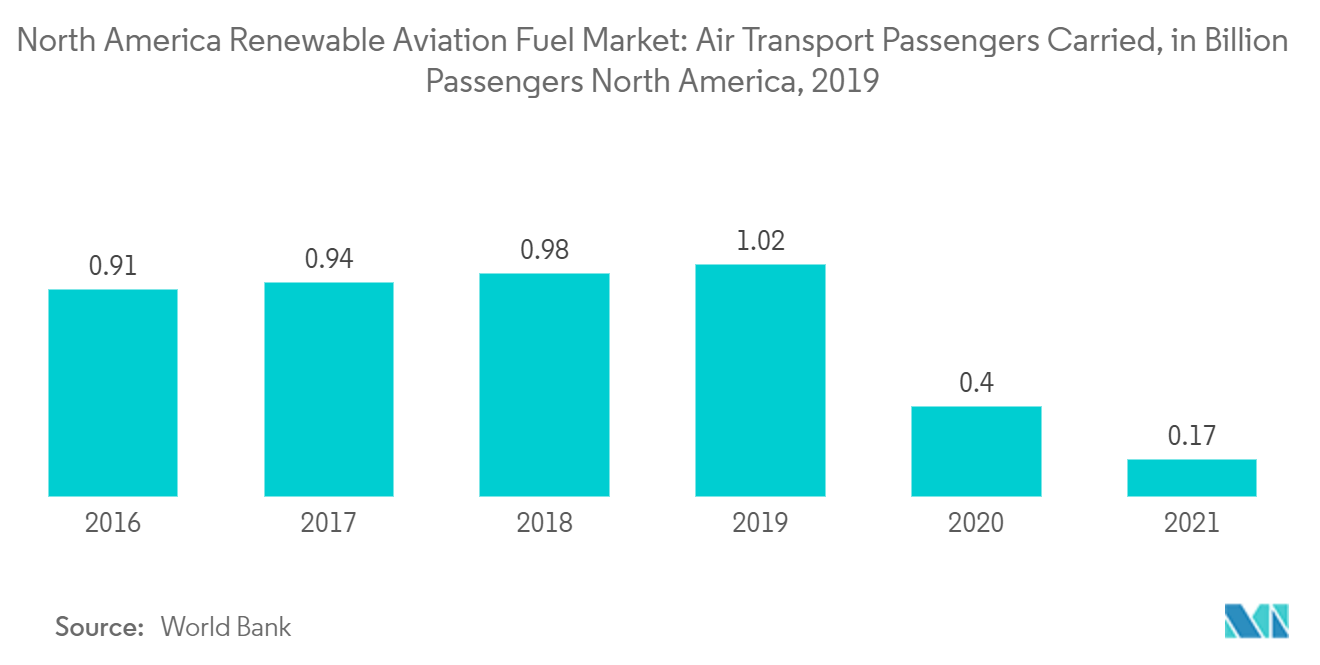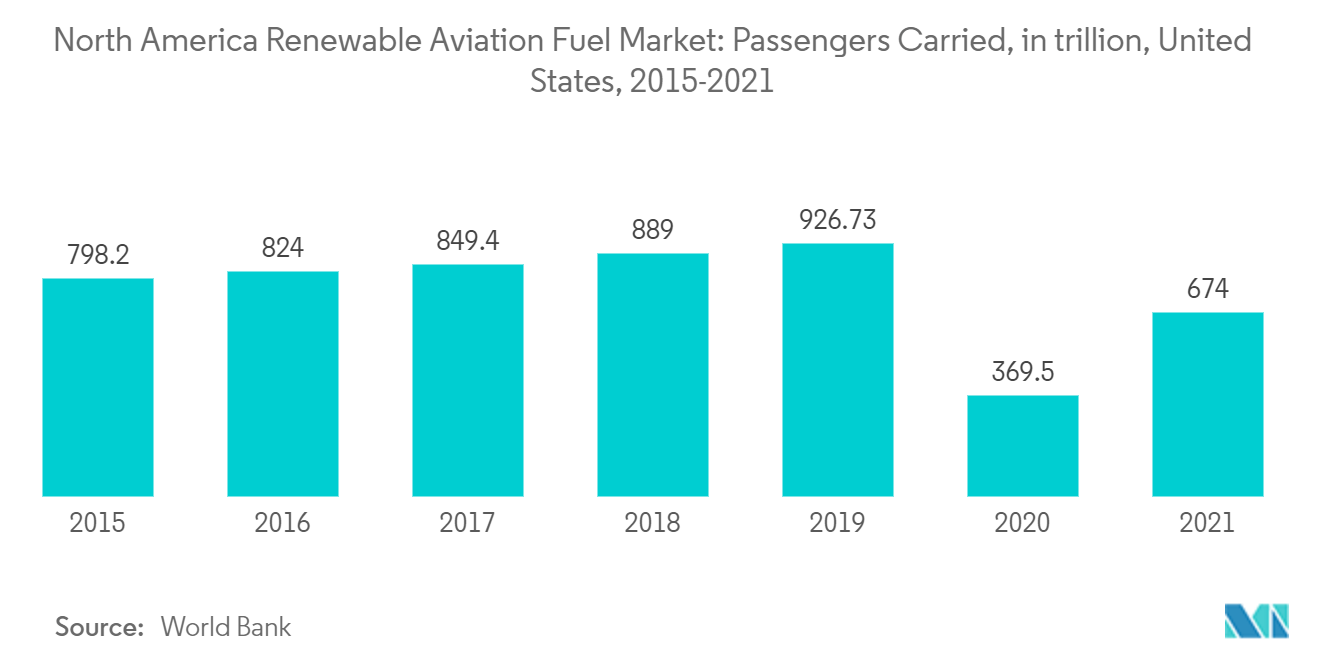Market Trends of North America Renewable Aviation Fuel Industry
This section covers the major market trends shaping the North America Renewable Aviation Fuel Market according to our research experts:
Defense Sector to be the Fastest-Growing Segment
- The defense sector consumes a large amount of aviation fuel. For instance, In North America, on average, the United States military burns about 4.8 billion gallons of jet fuel and diesel each year. Nearly half of that goes to the Air Force and around one-third to the Navy.
- Moreover, the military sector seeks to improve the environmental performance of its aircraft fleets and reduce environmental emissions. Biofuels are considered a way to maintain secure fuel sources and reduce cost volatility while supporting the country's environmental initiatives, leading to market growth in North America.
- As part of the United States Air Force's goal of achieving half of its domestic fuel that needs to be drawn from alternative sources, the military and commercial airlines tested alcohol-to-jet (ATJ) fuel on A-10 ground attack aircraft.
- Renewable fuel production is getting a hard push from many federal agencies, including the United States Department of Energy (DOE) and the Federal Aviation Administration, for large-scale commercialization, which, in turn, drives the demand for the renewable aviation fuel market in North America.
- The defense sector consumes a large amount of aviation fuel. For instance, on average, the US Air Force consumes approximately 4.8 billion gallons of aviation fuel annually, about 81% of the total Air Force energy budget. Nearly half of that goes to the Air Force and around one-third to the Navy. Therefore, as the budget increases for the defense sector, the air force fleet is expected to increase, positively affecting the aviation fuel market.
- Further, companies, such as Honeywell, use the renewable jet fuel process technology for the United States Navy and Air Force as part of a joint program for the United States Defense Energy Support Center (DESC) for alternative fuel testing and certification.
- Therefore, such increasing development in the aviation fuel sector and the need to cut carbon emissions are expected to drive the renewable aviation fuel market in the defense sector during the forecast period.

United States to Dominate the Market
- North America is one of the largest markets for the aviation industry and renewable aviation fuel. In 2021, air passenger transport in the United States carried more than 674 million air passengers, which was approximately 82.5% more than in 2020. Countries such as the United States and Canada accounted for the major share in air passenger count in 2021.
- In January 2022, the Environmental Protection Agency (EPA) issued proposed volume requirements, under the RFS program, for cellulosic biofuel, advanced biofuel, and total renewable fuel for 2022. Under this, the renewable fuel standard for 2022 was set at 36 billion gallons, an increment of over 3 billion gallons over the previous year.
- Further, the existing framework of fuel policies in North America is expected to support hydro-processed esters and fatty acids (HEFA) fuel production shortly, thereby increasing the opportunities for HEFA fuel producers in the region.
- The military sector of the United States has also initiated various strategies to blend biofuels with conventional petroleum for its aircraft, to adopt a cleaner fuel. For instance, in October 2021, the United States Air Force, in collaboration with Twelve, announced that they had completed the pilot program for the conversion of carbon dioxide into viable jet fuel.
- The military sector of the United States has also started to blend biofuels with conventional petroleum for its aircraft to adopt a cleaner fuel. The United States Department of Energy (DOE) co-funded the construction of three integrated bio-refineries that can produce hydrocarbon fuels that meet military specifications for JP-5 (jet fuel used primarily by the US Navy), JP-8 (jet fuel used mostly by the US Air Force), or F-76 (diesel), thus, driving the demand for aviation fuel market in coming years.
- In December 2021, Aemetis signed an agreement to Purchase a 125-Acre Former US Army Facility to produce 90 million gallons of sustainable aviation fuel, renewable diesel, and another byproduct per year. The plant is expected to supply the US Military trucks and airforce with ultra-low carbon renewable fuels to reduce greenhouse gas (GHG) emissions and other pollutants associated with conventional petroleum-based fuels. Thus, such initiatives are likely to increase demand for sustainable aviation fuel in the military sector during the forecast period.
- Therefore, based on the above-mentioned factors, the United States is expected to have a positive impact on the renewable aviation fuel market during the forecast period.


